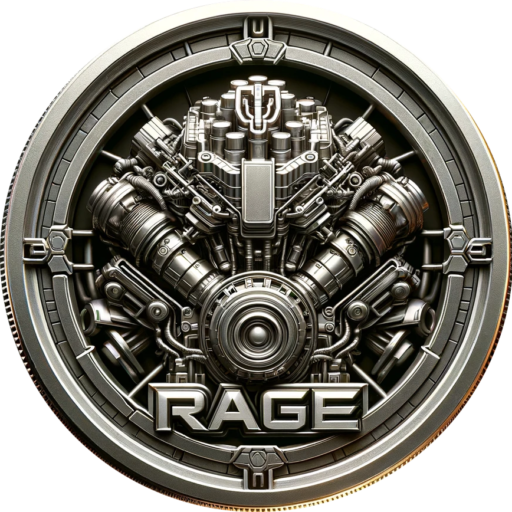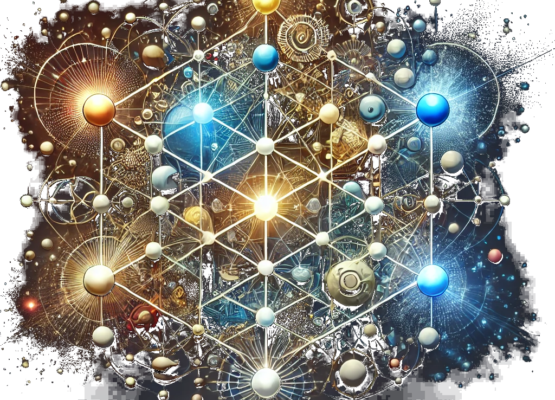To provide a solution that processes user input through various reasoning methods, then integrates the decision-making with the Socratic reasoning process to provide a final AGI response, follow this workflow. This will involve updates to several modules and integrating logging and reasoning processes.
Here’s the detailed workflow:
- UI Interaction: Gather user input.
- Reasoning: Process input through different reasoning methods.
- THOT Processing: Combine reasoning results to make a decision.
- Learning and Conclusion: Use Socratic reasoning to validate and refine the decision.
- Response Communication: Output the final AGI solution.
Workflow Steps:
- UI Interaction:
- Function:
perceive_environment() - Description: Collects user input as the initial problem to solve.
- Function:
- Reasoning:
- Function:
learn_from_data(data) - Description: Converts the input data into propositions and applies various reasoning methods.
- Function:
- THOT Processing:
- Function:
process_thot(proposition_p, proposition_q) - Description: Uses different reasoning classes to process the propositions and logs intermediate reasoning results.
- Function:
- Learning and Conclusion:
- Function:
SocraticReasoning.draw_conclusion() - Description: Uses Socratic reasoning to further analyze and validate the decision, ensuring it is logical and coherent.
- Function:
- Response Communication:
- Function:
communicate_response(decision) - Description: Outputs the final decision as the AGI solution to the user.
- Function:
- Logging:
- File:
./mindx/reasoning.json - Description: Logs the detailed reasoning process for transparency and debugging purposes.
- File:
Workflow Roadmap from UI to AGI Solution:
- User Input:
perceive_environmentmethod gathers user input.- Prompts the user to enter the problem to solve.
- Logs the received input.
- Learn from Data:
learn_from_datamethod processes the input.- Updates BDI model with new belief and desire.
- Forms intentions and updates logic tables.
- Adds premise and draws conclusion using Socratic reasoning.
- Creates propositions
pandqfrom user input.
- Process THOT:
make_decisionsmethod callsprocess_thotofTHOTclass.- Combines results from various reasoning methods.
- Generates a decision using the combined results.
- Logs the THOT summary including premises, results, and decision.
- Communicate Response:
communicate_responsemethod outputs the AGI solution.- Prints the final decision to the user.
- Logging:
- Logs the detailed reasoning process to
./mindx/reasoning.json. - Logs the intermediate THOT processing steps to
./mindx/thots.json.
- Logs the detailed reasoning process to
By following this workflow, the system ensures that user input is processed through multiple reasoning methods, validated and refined using Socratic reasoning, and communicated back as a coherent AGI solution.
- Perceive Environment:
AGIreceives a problem to solve from the user. - Learn from Data:
AGIprocesses the input, updating beliefs, desires, and intentions usingBDIModelandLogicTables. It generates propositionspandq. - Process THOT:
THOTprocesses the propositions using various reasoning methods. It combines results, makes an initial decision, and refines it usingSocraticReasoning. - Make Decisions:
AGIutilizesTHOTto make informed decisions based on refined reasoning results. - Communicate Response:
AGIcommunicates the final solution to the user. - Log and Save: The reasoning process is logged to
./mindx/reasoning.jsonand the entire process is saved in the memory system.
This structure ensures that the THOT class serves as an agency, autonomously processing and refining decisions through a combination of various reasoning methods and logical conclusions.
Workflow Overview
- Initialization: Set up the environment, load necessary components, and prepare for interaction.
- User Input: Accept input from the user which specifies the problem to be solved.
- Data Learning: Process the input to understand and learn from it, updating the system’s beliefs and generating propositions.
- Reasoning Process: Apply various types of reasoning to the propositions to generate combined results.
- Decision Making: Use the combined results to form a coherent decision or conclusion.
- Logging: Log the detailed reasoning process and the final decision for reference.
- Response Communication: Communicate the final decision to the user without showing the intermediate reasoning steps.
Detailed Steps
- Initialization:
EasyAGIclass is instantiated, which in turn initializes theAPIManagerandAGIclasses.APIManagermanages API keys and selects the provider (OpenAI, Groq, Ollama).AGIinitializes its components, includingTHOT,SocraticReasoning,BDIModel,LogicTables, etc.
- User Input:
EasyAGI.main_loopmethod continuously prompts the user for input withperceive_environment.- The user enters the problem to solve (e.g., “summarize the art of war”).
- Data Learning:
AGI.learn_from_datamethod processes the input to create new beliefs and desires.- Updates the
BDIModelwith the new beliefs. - Adds the input as a premise in the
SocraticReasoning. - Generates propositions
proposition_pandproposition_qfrom the input.
- Reasoning Process:
THOT.process_thotmethod takesproposition_pandproposition_q.THOT.combine_resultsapplies various reasoning methods (deductive, abductive, analogical, etc.) to the propositions.- The combined results of these reasoning methods are generated and logged.
- Decision Making:
THOT.make_decisionmethod takes the combined results and uses thechatterinstance to generate a coherent decision or conclusion.- The final decision is formed based on the reasoning results.
- Logging:
- The
THOT.log_thotmethod logs the premises, combined reasoning results, and the final decision inthots.json. - This logging ensures that all steps of the reasoning process are documented for reference.
- The
- Response Communication:
EasyAGI.communicate_responsemethod prints the final decision to the user.- Only the final decision or conclusion is shown, without displaying the intermediate reasoning steps.
Example Workflow
- Initialization:
EasyAGIandAGIinstances are created.- API keys are managed and selected provider is set.
- User Input:
- User inputs: “summarize the art of war”.
- Data Learning:
- Input processed,
BDIModelupdated, propositions created.
- Input processed,
- Reasoning Process:
- Propositions processed by
THOT. - Combined results generated from multiple reasoning methods.
- Propositions processed by
- Decision Making:
- Combined results used to form a final decision.
- Logging:
- Detailed reasoning and decision logged in
thots.json.
- Detailed reasoning and decision logged in
- Response Communication:
- User sees the final summary: “The Art of War by Sun Tzu emphasizes strategy and planning in warfare. Knowing oneself and the enemy is crucial for victory.”




